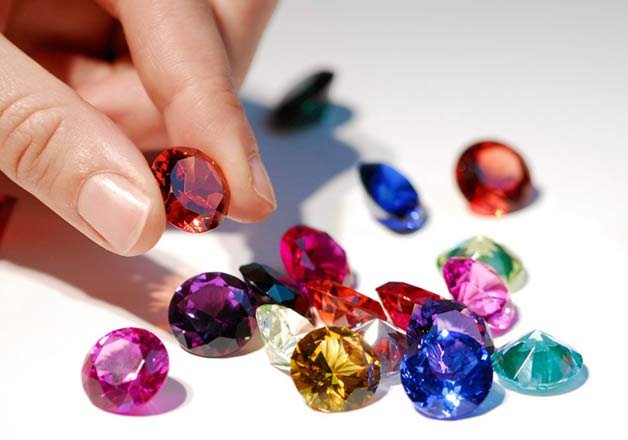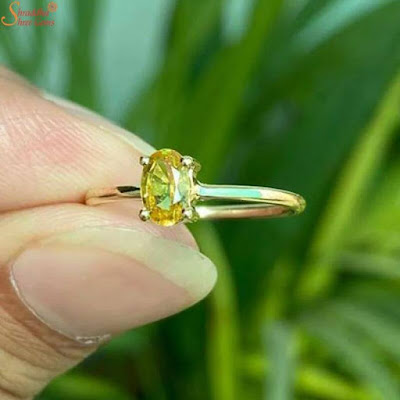The Allure and Mystique of the World's Most Popular Gemstones
Introduction
Gemstones have captured the human imagination for centuries with their mesmerizing colors, brilliant luster, and symbolic significance. These precious and semi-precious stones have adorned the crowns of kings, been passed down as family heirlooms, and even played roles in various cultural and spiritual practices. In this blog, we will delve into the world of the most popular gemstones, exploring their unique attributes, historical significance, and modern uses.
- Diamond - The Eternal Symbol of Love and Strength
Diamonds are perhaps the most well-known and cherished gemstones. With their exceptional hardness and timeless sparkle, they have become the symbol of everlasting love and commitment. The journey of a diamond from deep within the Earth's crust to a dazzling engagement ring is one filled with geological marvels and meticulous craftsmanship. The concept of a diamond engagement ring gained prominence thanks to a highly successful marketing campaign by De Beers in the mid-20th century. Today, diamonds are not just prized for their aesthetic value but also for their use in industrial applications due to their remarkable hardness.
- Ruby - The Gem of Passion and Vitality
Rubies have captivated cultures across the globe with their deep red hues symbolizing passion, vitality, and power. These gemstones have been associated with love, courage, and protection throughout history. In ancient times, rubies were believed to protect warriors in battle and guard against evil forces. Myanmar, historically known as Burma, is renowned for its high-quality rubies, particularly the vivid "pigeon's blood" red variety. Rubies continue to be highly sought after in jewelry, and their exceptional hardness makes them suitable for everyday wear.
- Emerald - The Gem of Rebirth and Wisdom
Emeralds are celebrated for their lush green color, which evokes images of nature and renewal. These gemstones are often associated with wisdom, growth, and fertility. In ancient civilizations like the Incas and Egyptians, emeralds were believed to have healing powers and were used as offerings to deities. The Colombian emerald, known for its rich green hue, remains the most coveted variety. Emeralds are typically included in high-end jewelry designs and continue to hold cultural and spiritual significance.
- Sapphire - The Gem of Royalty and Truth
Sapphires, with their deep blue shades, have long been associated with royalty and wisdom. The British Crown Jewels are adorned with stunning sapphires, highlighting their regal allure. In addition to their blue variety, sapphires can come in various colors, except red, which is classified as a ruby. These gemstones symbolize loyalty, truth, and protection. The famous Star of India, a 563-carat sapphire, is one of the largest and most well-known sapphires in the world. Sapphires are not only cherished in jewelry but also in watches, due to their durability and scratch resistance.
- Pearl - The Gem of Purity and Elegance
Unlike other gemstones, pearls are organic gems formed inside the shells of mollusks. Their creation is a result of nature's delicate process, and they are often associated with purity, elegance, and femininity. Cultured pearls, produced with human intervention, have made these gems more accessible. Pearls have adorned historical figures, such as Cleopatra, and have been symbols of status and sophistication for centuries. Modern jewelry designers continue to incorporate pearls into contemporary designs, redefining their classic appeal.
- Amethyst - The Gem of Tranquility and Spirituality
Amethysts, known for their violet hues, have been valued for their spiritual and calming properties. Throughout history, these gemstones have been linked to promoting sobriety, peace of mind, and spiritual growth. Ancient Greeks believed amethysts could ward off intoxication, while other cultures considered them as protective amulets. Amethysts are widely used in various types of jewelry, from rings to pendants, and are favored for their affordability and versatility.
Conclusion
Gemstones have held a special place in human culture for centuries, captivating our senses and telling stories of history, culture, and individual identity. From the brilliant sparkle of diamonds to the rich hues of rubies, emeralds, sapphires, and amethysts, each gemstone carries its unique charm and significance. These stones continue to shape modern jewelry trends, while their historical and cultural legacies remain an essential part of their allure. Whether they're cherished for their symbolic meanings or admired for their aesthetic beauty, gemstones will forever remain timeless treasures in the heart of humanity.


.jpg)

Comments
Post a Comment